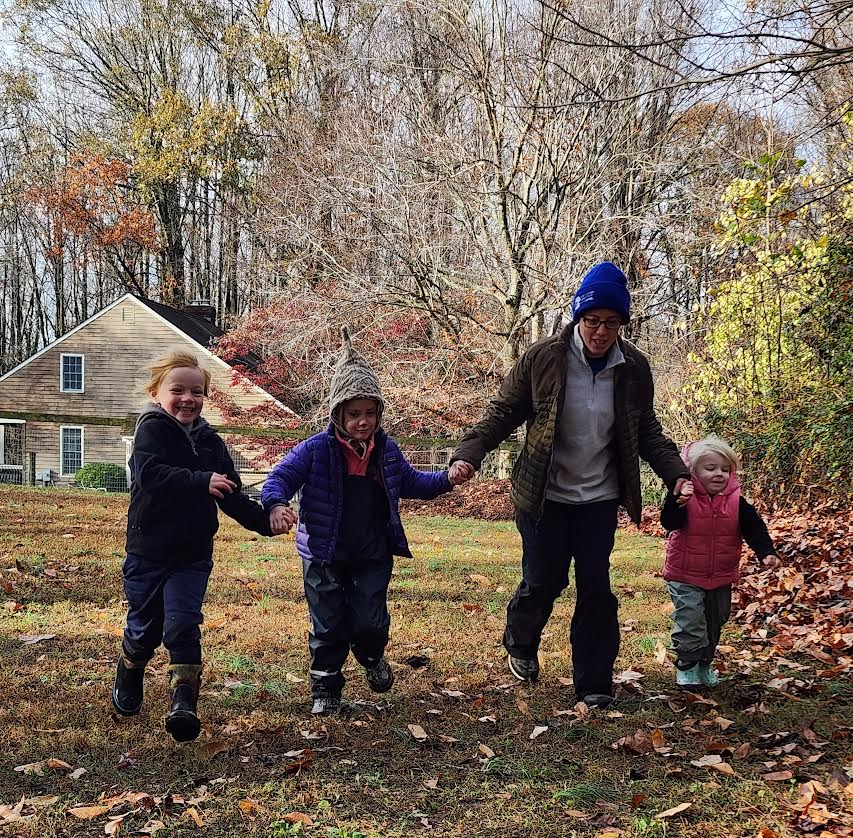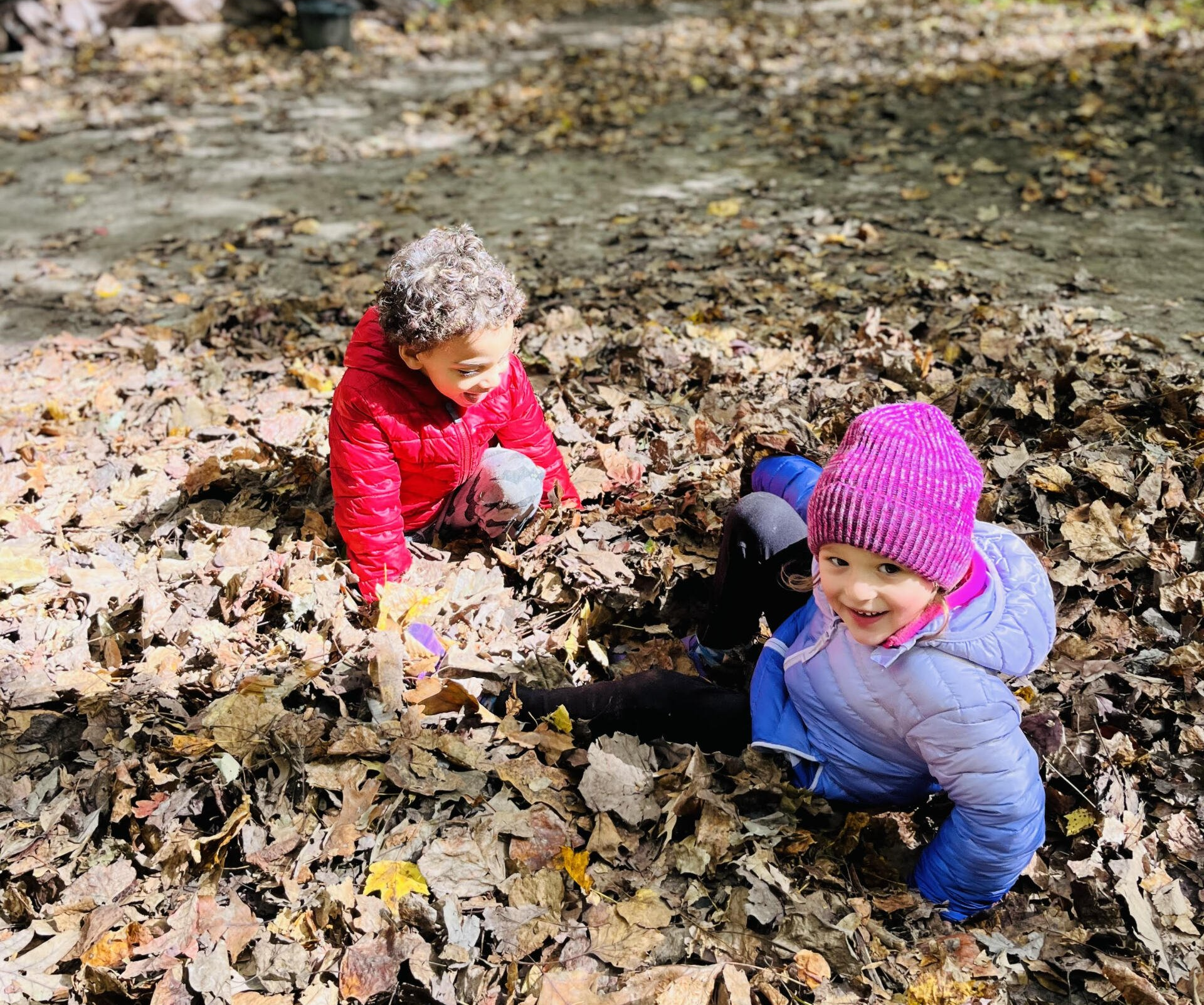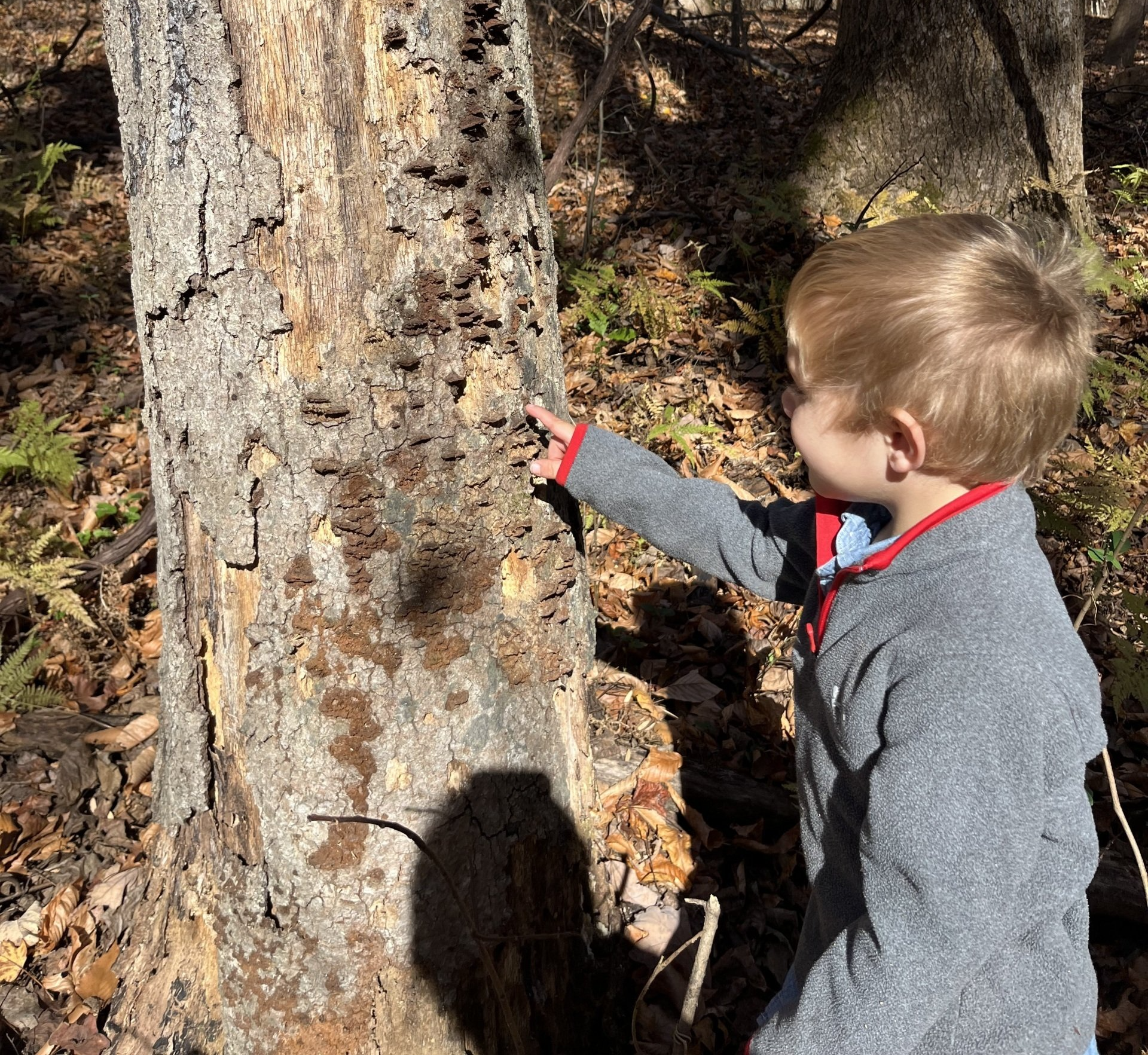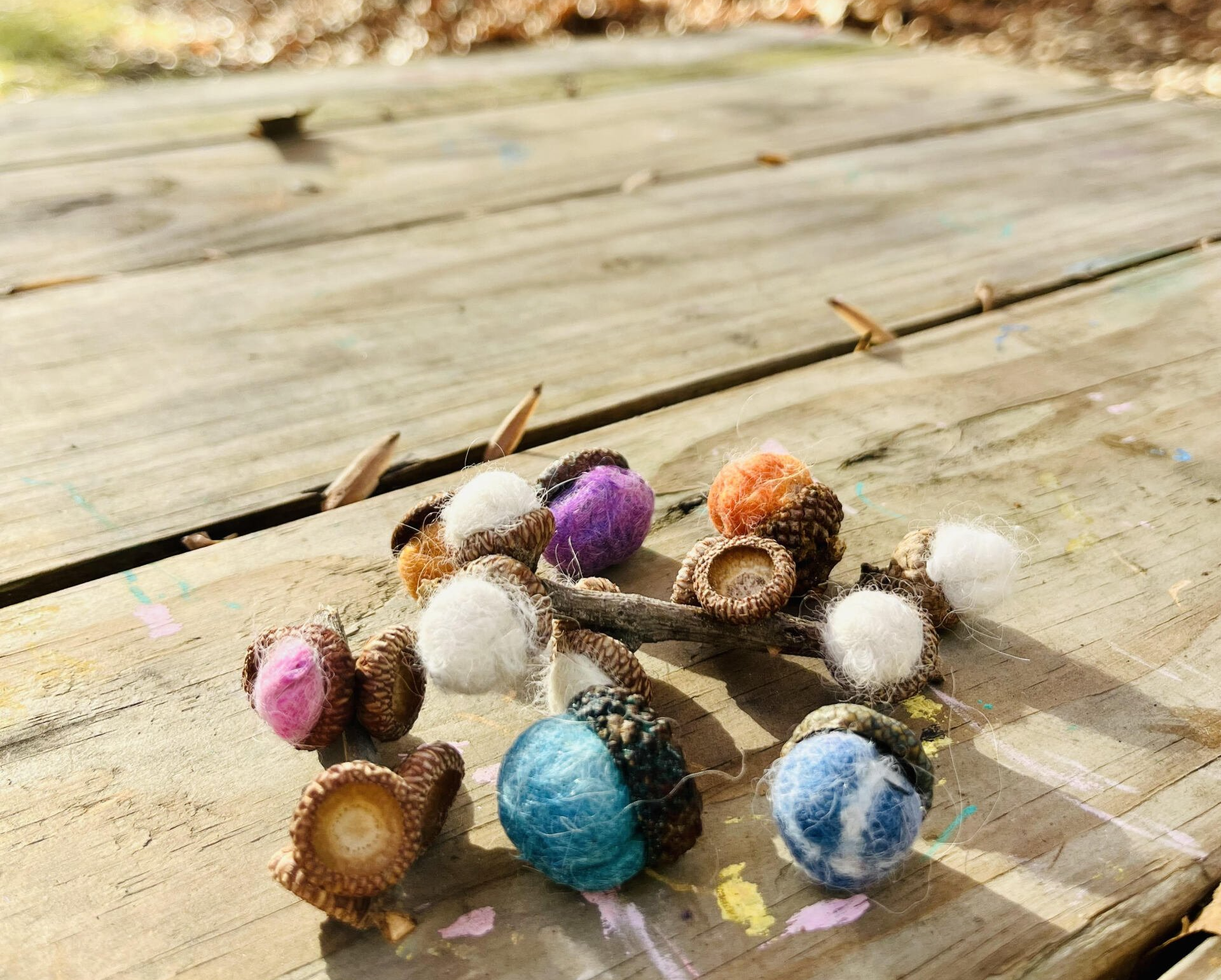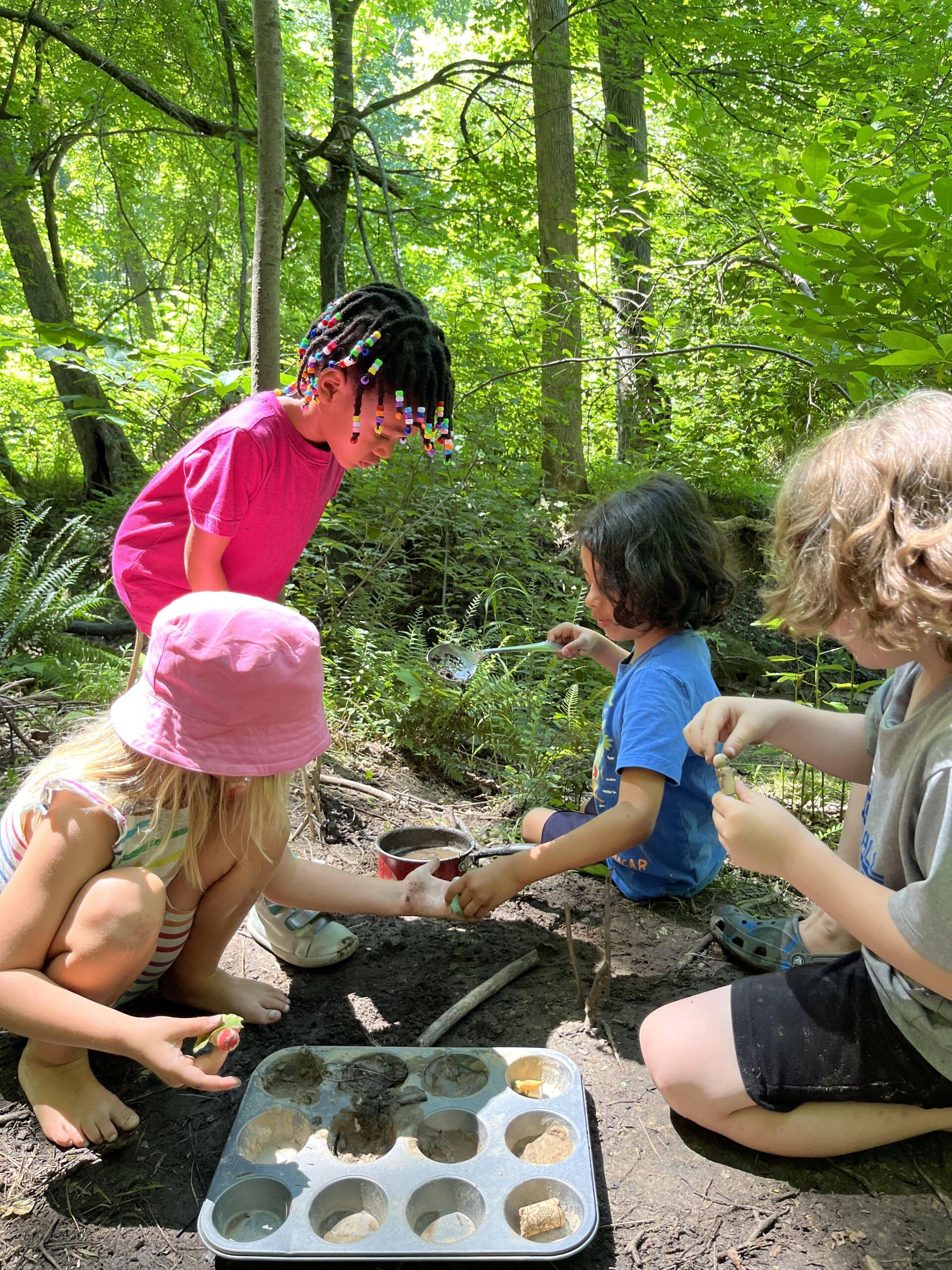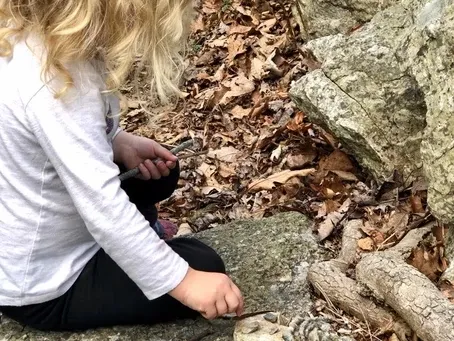As we enter a new school calendar year, we look forward to meeting new faces and seeing familiar children continue to grow. As children become more acclimated to the flow of the FORESTplay day, and increasingly comfortable in their groups, we begin to see the many benefits of nature immersion. Our goals as staff includes facilitating development of the WHOLE child, which we pride ourselves in taking into consideration unique needs and being able to meet them with our smaller group ratios. Once we have a greater understanding of the groups’ interests, dynamics and behaviors, we can further plan weekly experiences and activities aligning with the needs of the group. Many of our kids gravitate towards adventures that involve finding specific forest treasures and collecting them. Collection of natural items is one primary way that children connect with nature.
Enjoying Fall in the River's Edge Forest
LK Baldwin, FORESTPlay Director • November 18, 2022
Fall brings excitement and joy not only to the kids, but guides as well!
Thank you for allowing us to work with your children. We are so appreciative for all of our supportive families in the River’s Edge community. Happy Thanksgiving!

Building fires together Winter weather also presents the opportunity to build fires together and practice fire safety techniques. We teach children fire safety rules such as three points of contact with the ground and not to run or play in the fire pit area. Many groups enjoy working as a team to collect sticks and help set up the logs for burning. Sometimes, we are able to cook over the fire together, making baked apples, soup, and more.
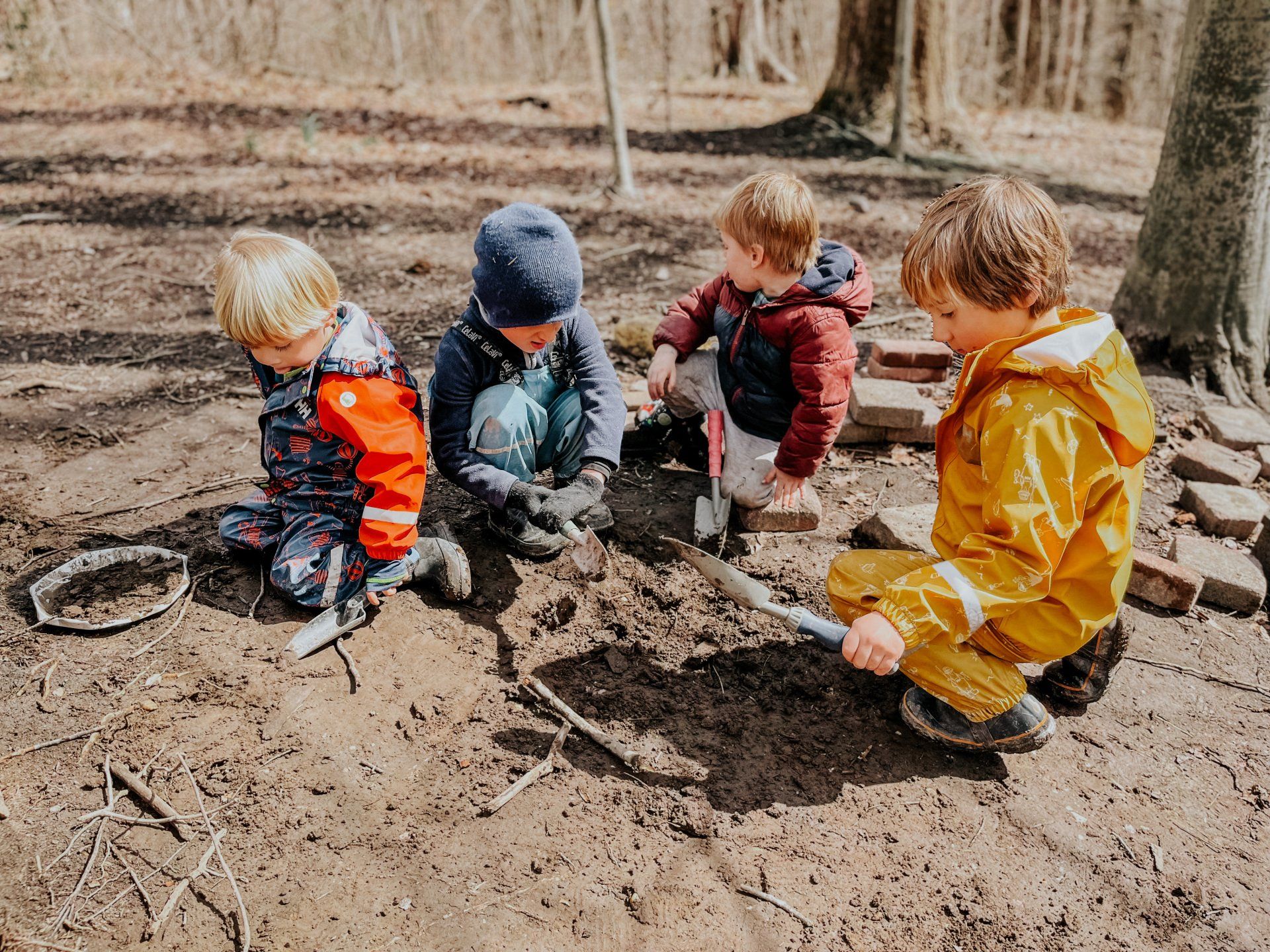
Spending significant time in nature has been linked to better overall physical and mental health, in addition to children having better academic performance. In all of our River’s Edge programs, children are moving their bodies and testing limits as they play. The natural materials provided allow for creativity and expression, in addition to the development of physical strengths. Throughout the winter, we have been taking many hikes and ventures to see what we could find in the forest and what changes may have occurred in the colder weather. There is rarely a dull moment as children begin to notice frozen water along the creek, frost covering the ground, many nut shells surrounding the trees, and more. As children become more experienced in the forest, we observe them beginning to notice natural elements on their own and showing them to us as guides, rather than us being always the first to point a discovery out.

Proprioception tells us how much force or muscle strength to use for different activities. This sense helps us know how to complete tasks such as picking things up gently, knowing how to put something down without force, and being overall more aware of our bodies. Nature offers plenty of full bodied play that will stimulate the proprioceptive sense. When children build forts with palettes or planks, they are engaging in “heavy work.” Heavy work provides sensory input and can be therapeutic as children focus to pick up a heavy log and have to coordinate with their body. Other examples may include: pushing a swing, pulling the rope swing or a heavy wagon, or digging with a shovel.

A recent article in the Wall Street Journal highlights the importance of a longer, slower childhood. Nature can greatly contribute to a longer, slower childhood and positively influence all areas of child development. What does this mean? Children need enriching and "varied" positive experiences for their brains to remain malleable for longer periods of time. Children learn there are many possibilities and often more than one answer to a question when they spend significant time in nature. The forest gives space for children to follow their curiosity and wonder. Nature is constantly changing, encouraging children to discover and play in novel ways. It’s all about the brain! T he architecture of the brain includes and ongoing process of neuron activity! The early years are the most active time period for neural connections to be formed. Connections are early in the brain build the foundation for later connections. In summary, the early childhood experiences will shape how well the brain functions through adulthood.


